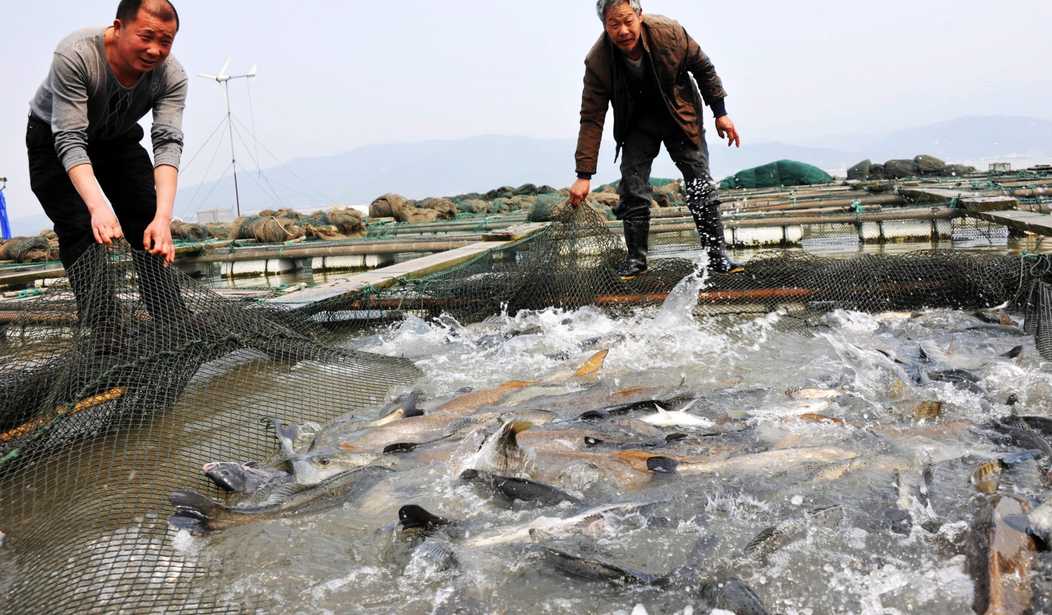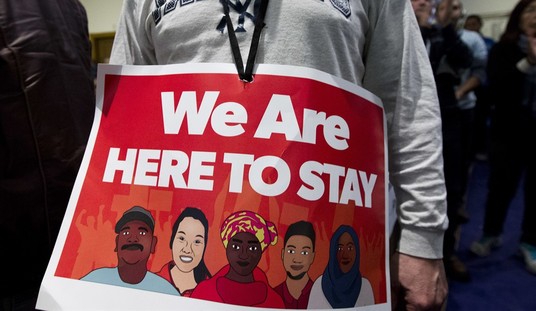Imported farm-raised seafood from China is tainted with antibiotics and often salmonella, U.S. regulators say, and the tainted fish is making its way to American tables.
The problem is, Asian fish farmers often supplement their fish feed with feces from pigs and geese, which contain harmful bacteria and antibiotics that have a direct impact on the seafood we eat. According to the latest research, up to 90 percent of the antibiotics administered to pigs pass through their urine and feces.
The U.S. Department of Commerce slapped a 112 percent tariff on Chinese shrimp, effective 2005, but unfortunately, Chinese suppliers have found ways to get around that.
A new report from Bloomberg Business Week explains how pervasive the problem is, and how the Chinese are getting away with it.
Beside one of those fish farms near Zhaoqing, on a muggy day in June, a farmhand wearing a broad-brimmed straw hat hoses down the cement floor of a piggery where white and roan hogs sniff and snort. The dirty water from the pens flows into a metal pipe, which empties directly into a pond shared by dozens of geese. As the yellowish-brown water splashes from the pipe, tilapia flap and jump, hungry for an afternoon feeding.
Chinese agriculture has thrived for thousands of years on this kind of recycling—the nutrients that fatten the pigs and geese also feed the fish. But the introduction of antibiotics into animal feed has transformed ecological efficiency into a threat to global public health.
At another farm, in Jiangmen, a farmer scatters a scoop of grain to rouse her slumbering swine, penned on the edge of a pond with 20,000 Mandarin fish. The feed contains three kinds of antibiotics, including colistin, which in humans is considered an antibiotic of last resort. Colistin is banned for swine use in the U.S., but until November, when the Chinese government finally clamped down, it was used extensively in animal feed in China. Vials and containers for nine other antibiotics lie around the 20-sow piggery—on shelves, in shopping bags, and atop trash piles. Seven of those drugs have been deemed critically important for human medicine by the World Health Organization.
The overuse of antibiotics has transformed what had been a hypothetical menace into a clear and present one: superbugs, bacteria that are highly resistant to antibiotics. By British government estimates, about 700,000 people die each year from antibiotic-resistant infections worldwide. If trends continue, that number is expected to soar to 10 million a year globally by 2050—more people than currently die from cancer.
In November 2015 scientists reported the discovery of a colistin-resistant gene in China that can turn a dozen or more types of bacteria into superbugs. Since then the gene has been found in patients, food, and environmental samples in more than 20 countries, including at least four patients in the U.S. Food, it now appears, can be a crucial vector. “People eating their shrimp cocktails and paella may be getting more than they bargained for,” says Dr. Martin Blaser, a professor of microbiology and an infectious diseases physician at New York University Langone Medical Center who chairs President Barack Obama’s advisory panel for combating antibiotic-resistant bacteria. “The penetration of antibiotics through the food chain is a big problem.”
But the antibiotics aren’t the only problem. Because the distribution networks that move the seafood around the world are often filthy, the products teem with bacteria that can’t be killed by common antibiotics.
In almost a third of random seafood samples collected in Shanghai from 2006 to 2011, researchers found salmonella, a major cause of gastroenteritis in people. A closer examination of the germs showed that 43 percent of the samples harbored multidrug-resistant strains of bacteria.
After the U.S. antidumping tariffs on Chinese shrimp went into effect in 2005, a group of seafood executives gathered in Shanghai to find another way to export shrimp to the U.S.
Many knew one another from when they’d all worked for Shanghai Fisheries, a large company overseen by the government. The executives agreed to create a venture that would focus primarily on exporting shrimp to the U.S., despite the new tariff. They would finance and control the company from China, but it would be incorporated in Texas. That was the beginning of American Fisheries.
[…]
No paperwork connected to those 2011 and 2012 shipments of Malaysian-labeled shrimp indicated they might have originated in China. The certificates of origin were signed by officials at the Penang Malay Chamber of Commerce. On a day in August, a man named Mohd Noordin Ismail sits at a desk in the reception room of the chamber’s offices in the seaside district of George Town. Bespectacled and wearing chunky gold rings on his fingers, Mohd Noordin has a foot-high stack of documents teetering in front of him. He says he’s worked at the chamber of commerce for 40 years, and his duties include signing certificates of origin for products produced in Malaysia and then exported. The certification process, as he describes it, is built on trust. He’s presented with documents provided by exporters, and he rubber-stamps the certificates under the assumption that the documents are genuine and correct. He doesn’t verify their authenticity.
“We cannot trace if the shrimp is coming from Thailand or from China or from other countries,” Mohd Noordin said. “We cannot trace.”
“When you talk about globalization…people move at different speeds,” explained Bloomberg editor Megan Murphy. “Regulators move at different speeds and economies are moving at very different speeds and they will take their advantage where they can in terms of exploiting regulatory arbitrage…The antibiotics there have been introduced for a specific reason that is beneficial to that part of the economy. It’s just that on the end product of the economy, on the more developed world side, that’s where the problems are emerging.”
Murphy said that there might have to be some sort of “global oversight” over this particular sector of the global economy in order to fix the problems.








Join the conversation as a VIP Member